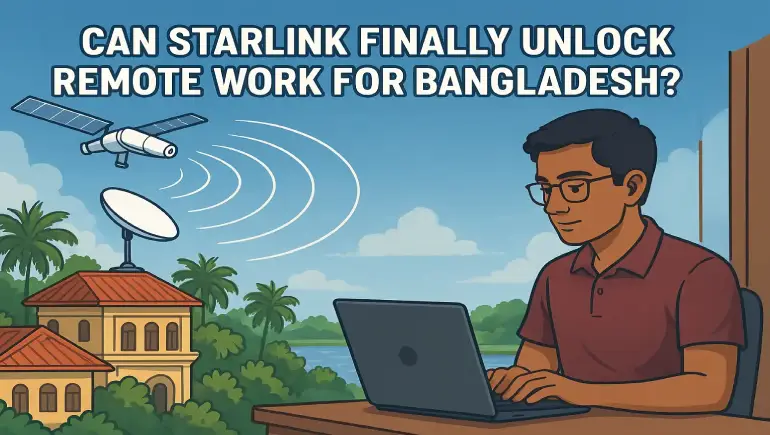
In an age where remote work is shaping the global economy, internet connectivity remains a decisive factor in determining who gets to participate. For Bangladesh—a country rich in human capital but hampered by infrastructural limitations—Elon Musk’s Starlink satellite internet service could be a game changer. With its promise of high-speed internet anywhere, Starlink has the potential to bridge the urban-rural digital divide and revolutionize how, where, and by whom work gets done.
Despite impressive strides in digital infrastructure in recent years, Bangladesh still struggles with internet accessibility in many parts of the country. While urban centers like Dhaka and Chattogram enjoy fairly reliable broadband, rural and coastal regions often lack stable connectivity. Fiber optics rarely reach beyond district towns, and mobile networks are frequently overwhelmed or spotty. This creates a significant barrier for remote work, limiting opportunities mostly to urban dwellers.
Starlink, developed by SpaceX, offers internet connectivity through a network of low-earth orbit (LEO) satellites. Unlike traditional ISPs, which require costly infrastructure, Starlink only needs a clear view of the sky and a satellite dish. This means that even villages in the Chittagong Hill Tracts or chars (river islands) in the Brahmaputra basin could potentially access speeds suitable for video conferencing, cloud computing, and other remote work essentials.
Early speed tests in other countries have shown Starlink consistently providing 100–200 Mbps with low latency, enough for remote collaboration, streaming, and online freelancing. If replicated in Bangladesh, this could open up a world of economic opportunities for millions who have been excluded due to their location.
The implications are enormous:
However, the promise of Starlink is not without hurdles. The biggest challenge is affordability. The initial setup cost—typically around $500 globally—and the monthly subscription fee of $100 or more could be prohibitively expensive for average Bangladeshi households. Additionally, regulatory approval from the Bangladesh Telecommunication Regulatory Commission (BTRC) and alignment with national data policies will be critical. There’s also the question of local support and maintenance. While Starlink’s model minimizes on-ground infrastructure, rural users may need technical assistance to install and maintain equipment.
If Starlink can address affordability—perhaps through government subsidies, microloans, or partnerships with local ISPs—it could be the most transformative development in Bangladesh’s digital landscape since the spread of mobile internet. The government has already signaled interest in diversifying internet sources, and Starlink’s entry could catalyze policy reforms focused on digital inclusion.
To truly unlock remote work, Starlink’s deployment must be part of a larger ecosystem involving digital literacy training, investment in cloud tools, and employer flexibility. Bangladesh can only harness its full human potential, from Sylhet tea gardens to the Sundarbans delta. Starlink alone won't solve all of Bangladesh’s connectivity problems, but it could mark the beginning of a new era. An era where where you live no longer determines your economic destiny. If integrated wisely, it could finally make remote work a reality for all, not just the privileged few.












Comments
There are no comments for this Article.